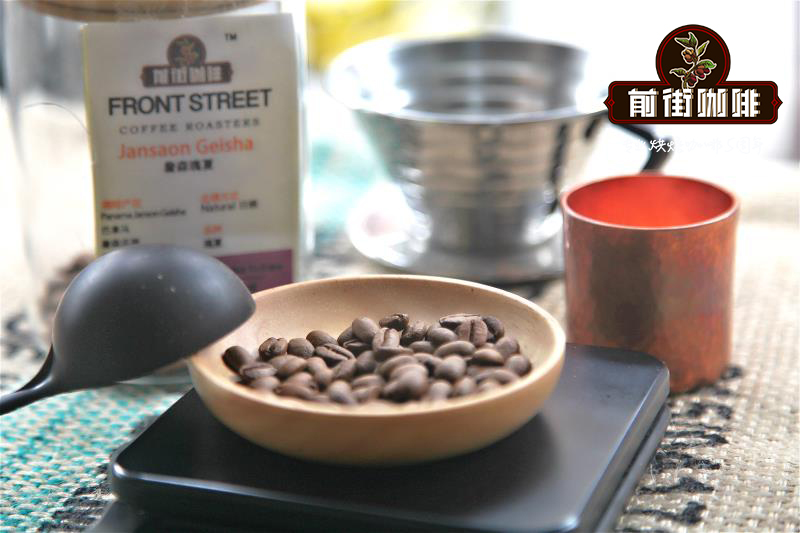Nicaraguan Coffee Variety in Madaguelba Coffee producing area

Professional coffee knowledge exchange More coffee bean information Please pay attention to coffee workshop (Weixin Official Accounts cafe_style)
Central America is a land bridge linking North and South America. There are seven countries in Central America: Belize, Costa Rica, El Salvador, Guatemala, Honduras, Nicaragua and Panama. Coffee is produced in all seven Central American countries, with Guatemala, Costa Rica and Honduras among the top ten coffee exporters in the world.
Coffee began to flourish in Central America in the 18th century, and this important economic product originated in Costa Rica around 1840. Central America has been at war since independence from Spain in 1821. Because Costa Rica is far away from Guatemala, the capital of Spain at that time, it was not affected by the civil war. Instead, Guatemala and El Salvador delayed coffee production due to the civil war. After that, political disputes gradually subsided, and with the exception of Honduras, Central American countries began coffee production in the 19th century.
Central America's natural advantages of sun, land and mountains, combined with an abundant labor force, make the region uniquely suited to growing high-quality coffee. By the late 19th century coffee had become an indicator of economic growth in Central America, and all Central American countries passed laws to promote coffee. The most significant results have been achieved in Costa Rica, El Salvador and Guatemala, which, together with the scientific and technological way of growing coffee, have made Central America one of the four major coffee producing areas in the world.
It is mainly divided into four regions: Segovias, Matagalpa/Jinotega, Boaco and Pacific Coast. The highest planting height in Segovia is around 1,500 - 2,000, and the coffee produced is the highest grade SHG (Strictly High Grown).
The volcanic ash and shady cultivation produce high-quality Nicaragua coffee with a mild, mild, slightly acidic flavor suitable for mixed coffee. The volume of Nigerian coffee is the largest of all coffee beans, of which the largest beans produced in Madagalpa are the most distinctive. This giant bean is larger than the average coffee bean, commonly known as the elephant bean, has a distinctive special aroma, and Maragogipe coffee has a round texture, its sister Matagalpa contains wild acidity, with indescribable aroma.
Coffee trees in this area are ancient bourbon species, usually planted on hillsides at altitudes of 1200 to 1500 meters, and have been recognized by OCIA (Organic Crop Improvement Association) as excellent organic coffee at high altitudes. Nigerian coffee is especially suitable for deep roasting and is recommended for brewing espresso coffee.
Important Notice :
前街咖啡 FrontStreet Coffee has moved to new addredd:
FrontStreet Coffee Address: 315,Donghua East Road,GuangZhou
Tel:020 38364473
- Prev

Is the flavor of geisha coffee beans the same as that of geisha coffee beans?
Professional coffee knowledge exchange more information on coffee beans Please pay attention to the coffee workshop (Wechat official account cafe_style) geisha coffee beans, some people call it Rosa coffee or Yiqiao beans, they are all the same kind of coffee beans. Its name comes from Geisha Mountain in Ethiopia. It sounds like a Japanese geisha, hence its name. There is a period of geisha coffee beans.
- Next

Coffee roasting A physical change in the roasting stage of coffee at roasting temperature and time.
Professional coffee knowledge exchange more information about coffee beans Please pay attention to the importance of the physical structure of the coffee workshop (Wechat official account cafe_style). The layered structure of coffee beans has a great impact on the flavor we want. Without a specific physical structure, the chemical reactions essential to flavor and aroma will not take place. Grind the raw beans into powder and place them the same as when baking
Related
- Beginners will see the "Coffee pull flower" guide!
- What is the difference between ice blog purified milk and ordinary milk coffee?
- Why is the Philippines the largest producer of crops in Liberia?
- For coffee extraction, should the fine powder be retained?
- How does extracted espresso fill pressed powder? How much strength does it take to press the powder?
- How to make jasmine cold extract coffee? Is the jasmine + latte good?
- Will this little toy really make the coffee taste better? How does Lily Drip affect coffee extraction?
- Will the action of slapping the filter cup also affect coffee extraction?
- What's the difference between powder-to-water ratio and powder-to-liquid ratio?
- What is the Ethiopian local species? What does it have to do with Heirloom native species?

